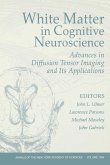Good thinkers have struggled with this problem for over a thousand years, and the last 150 years have witnessed a sustained assault on the problem. In this volume, Alan Gilchrist, one of the leading researchers in achromatic perception, reviews the history of the scientific development of lightness theory from the nineteenth century until the present and outlines and critiques all the main theories of lightness, laying out the strengths and weaknesses of each. Based on thirty years of research, Gilchrist presents his own argument that previous models of lightness perception are too good because they fail to capture the errors and illusions present in human perception. These errors may contain crucial clues in the sense that the overall pattern of errors is the signature of the human visual system.
How the human visual system determines the lightness of a surface, that is, its whiteness, blackness, or grayness, remains--like vision in general--a mystery. In fact, we have not even been able to create a machine that can determine, through an artificial vision system, whether an object is white, black, or gray. Although the photoreceptors in the eye are driven by light, the light reflected by a surface does not reveal its shade of gray. Depending upon the level of illumination, a surface of any shade of gray can reflect any amount of light. In Seeing Black and White Alan Gilchrist ties together over 30 years of his own research on lightness, and presents the first comprehensive, historical review of empirical work on lightness, covering the past 150 years of research on images ranging from the simple to the complex. He also describes and analyzes the many theories of lightness--including his own--showing what each can and cannot explain. Gilchrist highlights the forgotten-yet-exciting work done in the first third of the twentieth century, describing several crucial experiments and examining the brilliant but nearly unknown work of the Hungarian gestalt theorist, Lajos Kardos. Gilchrists review also includes a survey of the pattern of lightness errors made by humans, many of which result in delightful illusions. He argues that because these errors are not random, but systematic, they are the signature of our visual software, and so provide a powerful tool that can reveal how lightness is computed. Based on this argument and the concepts of anchoring, grouping, and frames of reference, Gilchrist presents a new theoretical framework that explains an unprecedentedarray of lightness errors. As both the first comprehensive overview of research on lightness and the first unified presentation of Gilchrists new theoretical framework Seeing Black and White will be an invaluable resource for vision scientists, cognitive psychologists, and
Hinweis: Dieser Artikel kann nur an eine deutsche Lieferadresse ausgeliefert werden.
How the human visual system determines the lightness of a surface, that is, its whiteness, blackness, or grayness, remains--like vision in general--a mystery. In fact, we have not even been able to create a machine that can determine, through an artificial vision system, whether an object is white, black, or gray. Although the photoreceptors in the eye are driven by light, the light reflected by a surface does not reveal its shade of gray. Depending upon the level of illumination, a surface of any shade of gray can reflect any amount of light. In Seeing Black and White Alan Gilchrist ties together over 30 years of his own research on lightness, and presents the first comprehensive, historical review of empirical work on lightness, covering the past 150 years of research on images ranging from the simple to the complex. He also describes and analyzes the many theories of lightness--including his own--showing what each can and cannot explain. Gilchrist highlights the forgotten-yet-exciting work done in the first third of the twentieth century, describing several crucial experiments and examining the brilliant but nearly unknown work of the Hungarian gestalt theorist, Lajos Kardos. Gilchrists review also includes a survey of the pattern of lightness errors made by humans, many of which result in delightful illusions. He argues that because these errors are not random, but systematic, they are the signature of our visual software, and so provide a powerful tool that can reveal how lightness is computed. Based on this argument and the concepts of anchoring, grouping, and frames of reference, Gilchrist presents a new theoretical framework that explains an unprecedentedarray of lightness errors. As both the first comprehensive overview of research on lightness and the first unified presentation of Gilchrists new theoretical framework Seeing Black and White will be an invaluable resource for vision scientists, cognitive psychologists, and
Hinweis: Dieser Artikel kann nur an eine deutsche Lieferadresse ausgeliefert werden.








